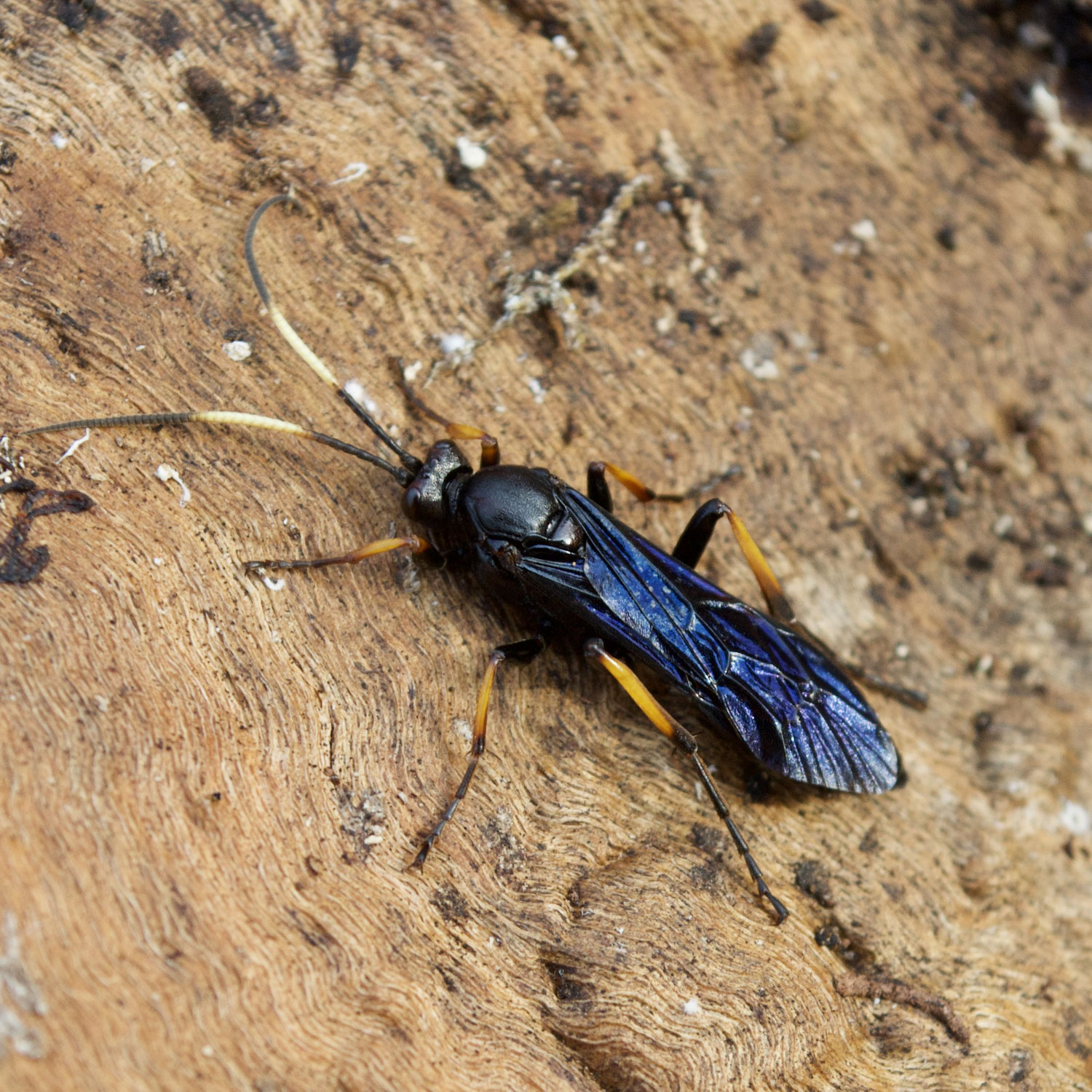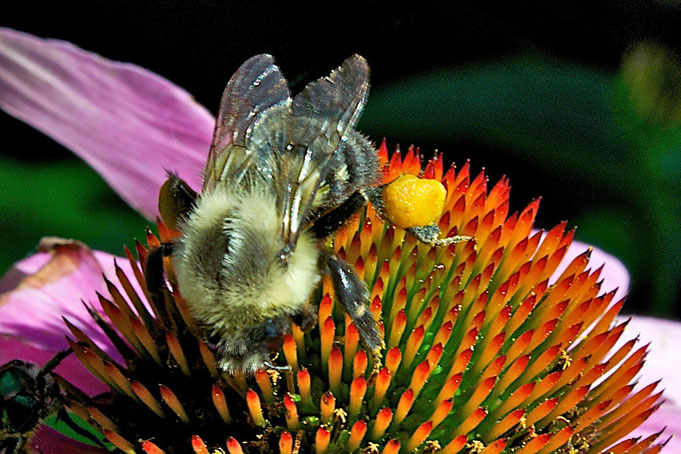insects
insects · November 15, 2014
Female Ichneumon wasp (Ichneumon centrator) hibernate for the winter beneath loose bark of fallen trees, which is where this one was found.
insects · October 28, 2013
Bees in the family Apidae, made up in part by bumblebees, honey bees, stingless bees, and orchid bees, all posess pollen sacs. The corbicula, Latin for "little basket", is a cavity on the rear legs into which pollen is placed.
insects · August 25, 2013
The Giant Swallowtail (Papilio cresphontes) is the largest butterfly in Canada and the United States. Adults have a forewing span of 4 to almost 6 inches (avg. 5.5 inches) for males and a span of 5 to 7 inches (avg. 5.8 inches) for females. It is an uncommon stray in southern New Hampshire and Vermont, but we have had them here at Distant Hill Gardens for the past two years.
insects · July 15, 2013
Ants are shown here feeding on the nectar and possibly pollinating flowers of Spreading dogbane (Apocynum androsaemifolium). This native bushy perennial grows on the field edges at Distant Hill Gardens. I said "possibly pollinating" because scientists have discovered that many ants secrete a natural substance that acts as an antibiotic. This secretion protects ants from bacterial and fungal infections, but unfortunately this secretion also kills pollen grains rather quickly.
insects · January 20, 2013
All insects change in form as they grow; this process is called Metamorphosis. There are two kinds of insect metamorphosis, simple (or incomplete) and complex (or complete) metamorphosis.
insects · October 19, 2012
The Common Green Darner (Anax junius) is one of the most common dragonflies in North America. Many of them migrate south for the winter, somewhat like the Monarch butterfly. As with Monarchs, the migration in intergenerational. The Green Darner that flies south in the autumn dies, and the next generation makes the trip back north in the spring. Researchers at Princeton and Rutgers Universities tracked 14 Common Green Darners with miniature radio tags in 2006. They discovered that migrating...
insects · July 22, 2012
The Folded-wing Skippers are not very colorful, so they are often overlooked in the garden. But they are an interesting insect because of their unique and characteristic posture: they hold their wings partially open while resting, with the front wings and hind wings held at different angles.. All members of this group feed on grasses or grassy-like plants, like sedges and rushes, as caterpillars. Because of this fact, they are often called Grass Skippers. Folded-winged Skippers, also called...
insects · July 08, 2012
Have you ever noticed that some Dragonflies point their tails up into the air at times, and wondered why? Well, a number of scientists have given it some thought, and have designed some experiments to answer the question. The research points to dragonflies attempting to cool off. It has been dubbed "The obelisk posture" and has been observed in about 30 species of Dragonflies and Damselflies. A few species lower their tails instead of raising them, but for the same purpose - to keep cool.
insects · June 22, 2012
A FOUR-SPOTTED SKIMMER This beautiful dragonfly is found around the world in the northern hemisphere. It is known as the Four-Spotted Skimmer (Libellula quadrimaculata) in North America, and as the Four-Spotted Chaser in Europe and Japan. Question: What is the state insect of Alaska?... You guessed correctly... the Four-Spotted Skimmer.
Distant Hill was listed as one of the Top 10 Places to Visit in New Hampshire!
Friends of Distant Hill (dba Distant Hill Gardens and Nature Trail) is a nonprofit,
tax-exempt organization under Section 501(c)(3) of the U.S. Internal Revenue Code.
Donations are tax-deductible as allowed by law. Tax ID# 84-3765898
or send a check via Snail Mail to:
Distant Hill Gardens and Nature Trail, 507 March Hill Road, Walpole, NH 03608









